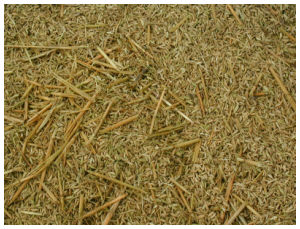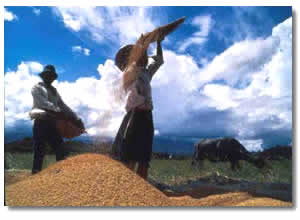|
|
|
Post production: Harvesting |
|
|
|
|
|
|
|
|
|
Cleaning the grain |
|
|
|
|
|
|
|
|
|
To identify the importance of cleaning and to describe different cleaning methods. |
|
Clean the grain |
|
What is cleaning?Cleaning grain means removing all the materials other than the grain. This could be sand, stones, straw, weeds and so on. After cleaning, the grain is usually put in bags to get transported to the place of drying (this is called bagging).
Cleaning grain |
|
Clean grain is worth more |
|
Why is proper cleaning important?
Grain cleaning after harvest is important as it removes unwanted materials from the grain. Clean grain has a higher value than grain that is contaminated with straws, chaff, weed seeds, soil, rubbish, and other non-grain materials.
Dirty grain
Grain cleaning will improve the ability of the grain to be safely stored, reduce unwanted materials (dockage) for milling, and improve milling output and quality.
Dirty grain can attract certain insects or fungus that might damage the grain.
|
|
|
|
|
How can you clean the grain?
Manually by winnowing: Lighter materials such as unfilled grains, chaff, weed seeds, and straw can be removed from the grain by using a blower, air fan, or by wind. Winnowing recovers only the heavier grains.
Cleaning the grain with the help of the wind
|
|
|
|
|
Mechanically by screening/Sifting: Smaller materials such as weed seeds, soil particles and stones can be removed by sieving the grain through a smaller sized screen (1.4mm or less sieve opening). Sometimes cleaners are included in a thresher.
Paddy cleaner with sieves and fan for winnowing |
|
|
|
|
|
|
Next lesson |
|
In this lesson you learned how to clean the grain. In the next lesson you will learn about a machine that can do different harvesting operations in one go. |
|

![obj[1]](obj_1_.gif)



